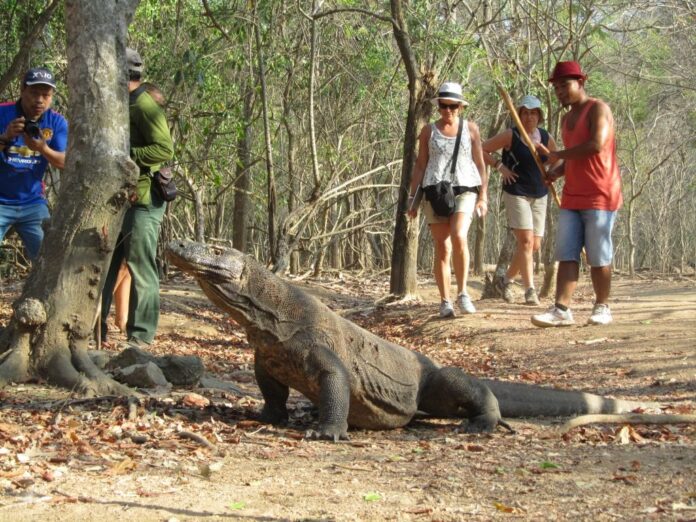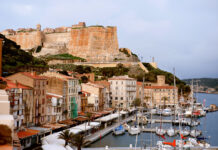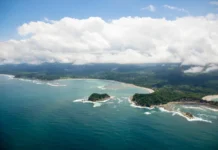Komodo National Park feels like a place where time slows down. The air carries the scent of salt and wild grass, and every hill seems to hold a secret. Jagged coastlines fade into translucent water, and on quiet mornings, mist drifts across the peaks of Padar Island like thin silk.
Visitors often come for the dragons, the famed Komodo monitors, but what they find is a living landscape that stirs something deeper. The balance between fierce nature and quiet solitude gives the park an unmatched rhythm. It’s both wild and welcoming, shaped by volcanic origins and centuries of natural evolution.
Exploring this region isn’t about checking off attractions; it’s about feeling the pulse of a world that still moves at its own pace, where each step connects you to both earth and myth.
Where Land Meets Legend
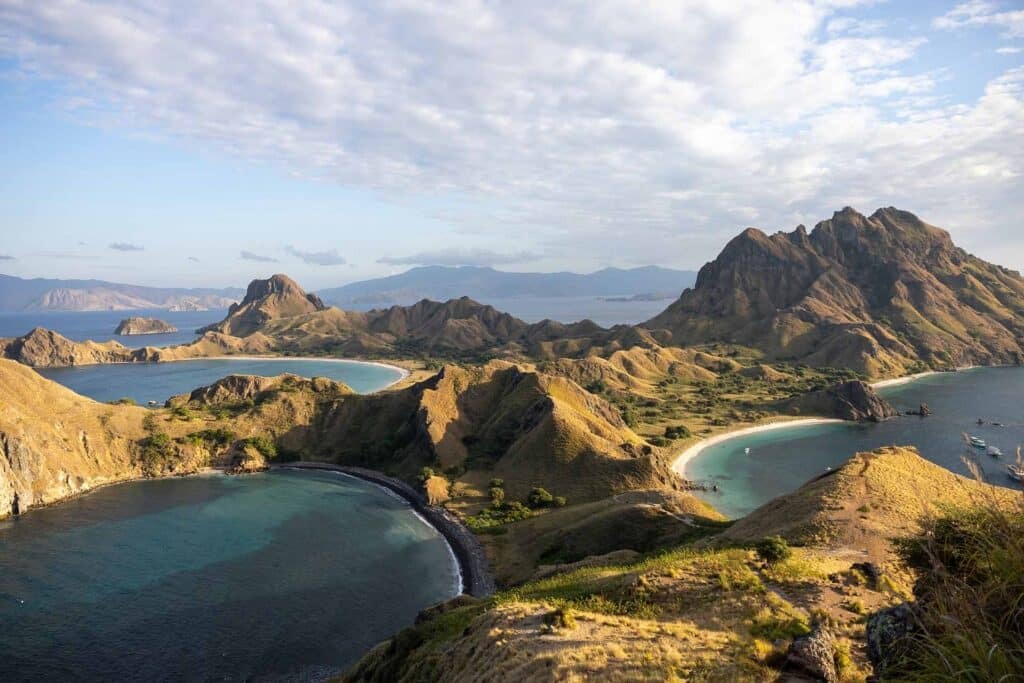
Stepping onto Komodo Island feels almost ceremonial. The dry air, the crunch of volcanic dust underfoot, and the sight of distant hills glowing bronze in the sun all build a sense of reverence.
The locals tell stories of the “Dragon Princess,” a legend describing how humans and dragons are siblings, an old belief that explains the respect shown toward these creatures.
Rangers guide visitors through narrow trails where Komodo dragons roam freely, their long tongues tasting the wind, their movement both slow and deliberate.
Watching one emerge from behind the bushes feels like witnessing the past come alive.
The trek usually ends at a viewpoint, high above the bay, where silence dominates and only the faint hum of cicadas fills the air.
It’s here that you begin to understand why this landscape has been protected, not only for its wildlife but for the wisdom it holds within its soil.
Cruising the Coral Seas
The true rhythm of Komodo reveals itself once you leave land behind. Sailing between the islands opens a new world, emerald waters, uninhabited beaches, and a horizon that glows pink at sunset.
The area belongs to the Coral Triangle, a vast marine region hosting over 500 species of coral and countless fish.
Drift through channels between Rinca, Padar, and Flores, and you might spot manta rays gliding beneath you, or dolphins racing beside your boat.
For travelers who want to blend adventure with comfort, a Komodo luxury boat charter offers a remarkable way to experience this beauty.
These charters allow you to explore at your own pace, snorkeling in quiet lagoons, dining under stars, or simply watching the sea change color through the day. Unlike crowded tours, private charters make space for stillness, the kind that deepens your connection with nature.
Underwater Sanctuaries Worth Protecting
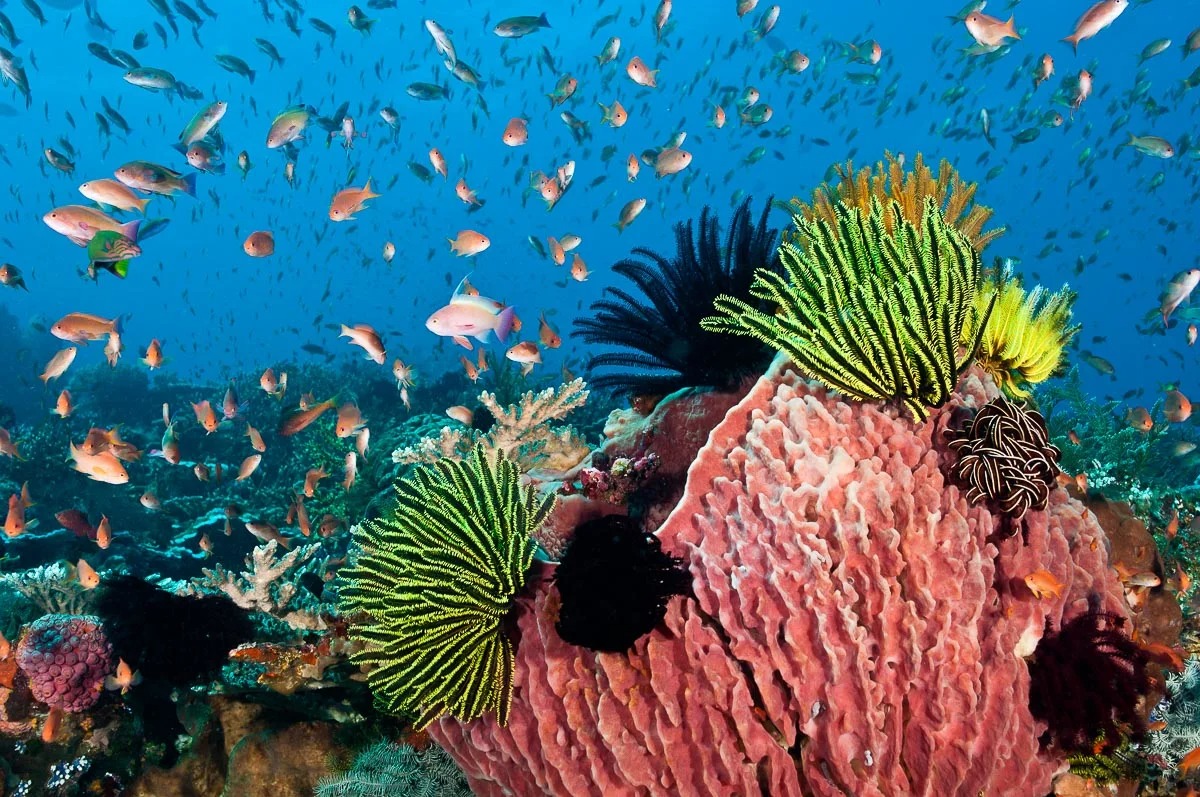
Diving in Komodo is a sensory awakening. Beneath the surface, the world turns into a mosaic of motion — coral heads in vivid oranges and purples, turtles drifting above sandy channels, and schools of jackfish forming silver tornadoes in the current.
Sites like Batu Bolong and Manta Point are world-renowned for a reason. Strong currents bring nutrient-rich water that fuels marine life, creating one of the most biodiverse underwater ecosystems on Earth.
Popular Dive and Snorkel Spots:
- Manta Point: Watch graceful manta rays loop through feeding currents
- Batu Bolong: A steep coral-covered pinnacle alive with color and fish
- Siaba Besar: Calm reef suitable for beginners and photographers
- Pink Beach Reef: Shallow coral garden beneath rose-colored sands
These reefs demand care. Always use reef-safe sunscreen, never stand on coral, and support dive operators committed to conservation. Protecting Komodo’s underwater world means ensuring its beauty endures far beyond our lifetimes.
Hidden Islands and Quiet Beaches
Beyond the main islands lie smaller sanctuaries where time drifts differently. Kanawa, Sebayur, and Kalong islands remain untouched havens for those seeking quiet.
White sand slips softly into clear turquoise, and every breeze carries a scent of salt and sun-warmed rock.
Here, afternoons stretch lazily, and sunsets paint the horizon in strokes of violet and gold. As twilight deepens, thousands of fruit bats rise from the mangroves, forming a moving shadow across the sky, one of Komodo’s most mesmerizing sights.
Did you know?
Komodo’s Pink Beach gets its rare hue from crushed coral fragments and microscopic marine organisms called foraminifera. Their red pigments mix with white sand to create a shoreline that looks almost unreal, a reminder that even the smallest creatures can shape the world’s wonders.
The Rhythm of Local Life
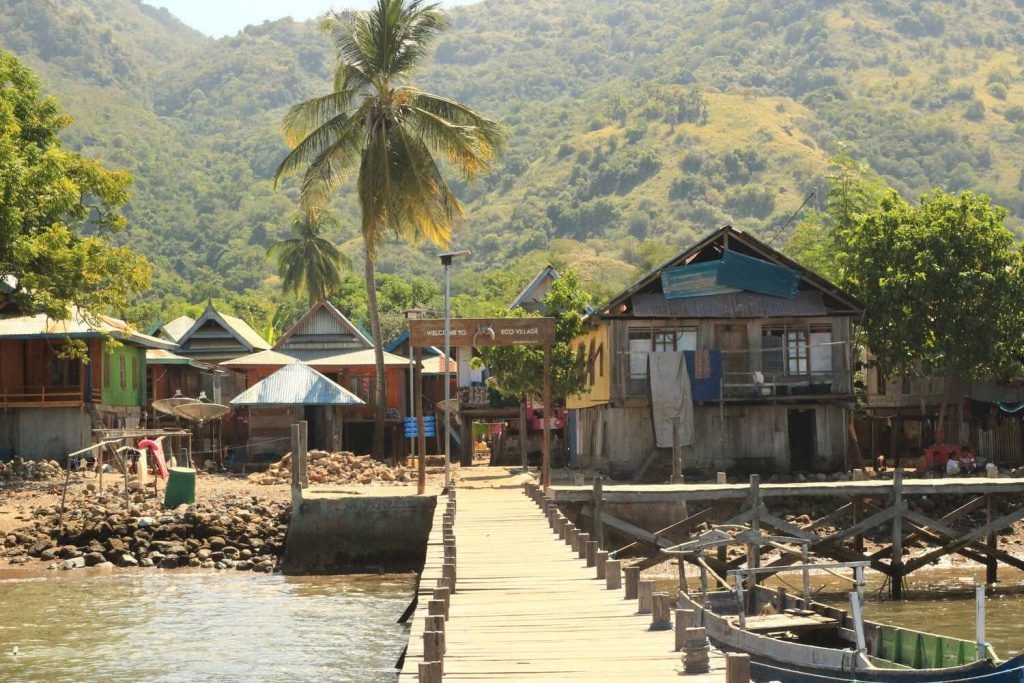
Life in the small fishing villages of Komodo and Mesa flows with the tide. Wooden homes stand on stilts, woven from bamboo and crowned with tin roofs that glitter in the sun.
Locals depend on the sea not only for food but for identity, boatbuilding, fishing, and pearl farming have been passed down for generations.
Visitors arriving by boat are often greeted with smiles and simple offerings of coconuts or woven bracelets.
Engaging with these communities brings understanding that tourism, when done thoughtfully, can sustain traditions rather than erode them.
Buy handicrafts directly from artisans, ask before photographing, and learn a few local greetings.
These gestures may seem small but they build bridges between cultures, a quiet reminder that Komodo’s treasures include not just its wildlife, but its people and their enduring relationship with the sea.
When to Go and What to Expect
Komodo’s seasons shape its mood. Between April and November, skies stay dry and seas calm, perfect for diving and sailing. The wet months from December to March bring scattered rain and lush greenery that revitalizes the hills. Fewer tourists visit then, giving the islands a tranquil feel.
| Season | Conditions | Ideal For |
| April – June | Clear skies, calm seas | Diving, photography, light trekking |
| July – September | Hot, dry, bright | Dragon spotting, sailing |
| October – November | Warm waters, vivid sunsets | Manta ray encounters |
| December – March | Occasional rain, lush scenery | Peaceful escapes, solitude |
Pack hiking shoes, a wide-brim hat, and reef-safe sunscreen. Waterproof bags are a must, as weather can change quickly. Above all, bring patience, Komodo’s rhythm rewards those who let go of schedules and embrace the pace of nature.
Sustainable Encounters
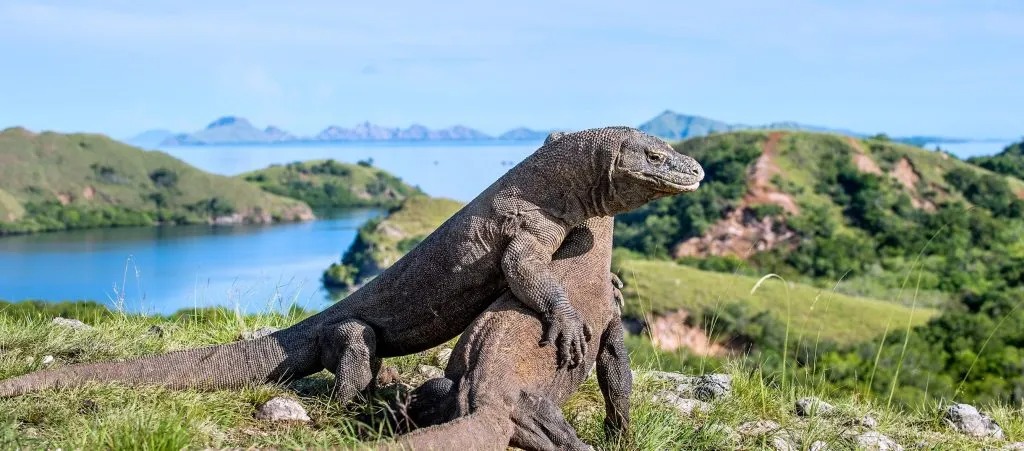
Komodo’s magic relies on balance. Its landscapes and waters are under UNESCO protection, yet true preservation depends on visitor awareness.
Responsible travel here means more than avoiding plastic or following park rules, it’s about presence. Move quietly, respect wildlife distances, and listen to local advice.
Many operators now partner with conservation projects, offering travelers a chance to join coral restoration or beach cleanups. Participating in these efforts adds meaning to your trip and gives back to the place that gives so much.
“Take only memories, leave only footprints.” This simple principle carries weight here, not as a cliché, but as a promise to protect what makes Komodo so extraordinary. Every traveler plays a part in keeping its legends alive and its ecosystems thriving.
Why Komodo Stays With Every Traveler
As your boat sails back toward Labuan Bajo, the islands fade slowly into the horizon, ridges turning gold, then violet, before the sea swallows the last light.
There’s a hush that lingers after days spent among dragons, coral, and open water. Komodo doesn’t shout its beauty; it whispers it, patiently, to those who listen.
The experience leaves more than photographs, it leaves awareness. The reminder that wilderness still exists, that myths can live within landscapes, and that balance between humans and nature is possible when respect leads the way.
Komodo’s story isn’t just told through its creatures or coasts, but through the silence that follows, the space it opens within you to see the world a little differently.

